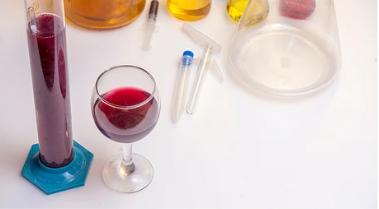With the development of brewing technology and the improvement of the level of analysis and testing, there has been a considerable understanding of the relationship between the composition of wine and its sensory quality. In addition, with the mass production of edible alcohol, the production process of wine has undergone significant changes. The development of the most advanced scientific instruments and equipment The successful development of state-of-the-art scientific equipment has made it possible to test wine without limiting it to conventional analytical methods. Lifeasible offers high-precision instruments that can analyze the trace components of wine to help customers test the quality of their wine, along with a sensory evaluation to determine the quality level of the wine. Our services are designed to make wine quality identification more scientific.
Solutions

As one of the leading providers of wone physical and chemical testing, Lifeasible offers comprehensive solutions for general testing in wine, including sensory testing, moisture, pH, net content, alcohol content, etc. Our laboratory will conduct tests strictly following international standards to provide reliable analytical results.
Below are our general testing solutions for wine. Customers can choose any item or combination of items according to their needs.
- Sensory Testing in Wine
Sensory standards are generally used to assist in wine testing. Based on the corresponding standards for this type of testing, we provide "electronic tongue" and "electronic nose" precision instruments to accurately test wine, which can help customers quickly detect the degree and type of wine and initially determine whether the wine is good or bad, true or false. This method can avoid the error in personnel testing and improve the speed.
- Alcohol Testing in Wine
The alcohol content is the volume percentage of ethanol content in liquor at a temperature of 20°C, expressed in milliliters of ethanol (alcohol) contained in 100 mL of wine, the unit of measurement %vol. Alcohol content as one of the mandatory inspection items, indicating that alcohol content is as important as food safety indicators for quality control.
We offer standard methods for determining the ethanol concentration in wine, including the density bottle method and the alcohol meter method. In addition, our laboratory has an automatic distillation combined with a digital density meter and a Raman spectroscopy-based alcohol testing platform to achieve rapid, high-precision testing, which is widely used for alcohol testing in wine.
- pH Testing in Wine
Usually, brewers use pH data to adjust the brewing process to achieve the best brewing fruit. However, pH changes during the brewing process of beer from wort to beer. Therefore, pH testing is carried out throughout the brewing process. We provide precision pH test strips and pH meters to determine whether the brew is acidic, neutral, or alkaline. pH as a beer process indicator plays a very important role in brewing efficiency and effectiveness, including:
- Achieving optimal sugar yield.
- Reducing leaching of bran tannins during lees washing and reducing the astringent taste of the beer.
- Measuring the pH of the finished beer gives an idea of the relationship between the best drinking taste of the beer and the pH.
Our solutions for general testing in wine have excellent reproducibility and accuracy for different types of wines, and the results are fully compliant with the standards. Some of our methods are easy to use, fast and efficient, with high accuracy, making them a reliable choice. If you are interested in our solutions, please contact us for technical consultation and quotation.
For research or industrial raw materials, not for personal medical use!
